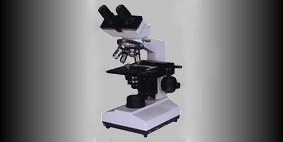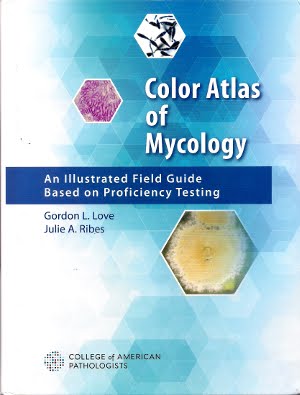This isolate was cultured from the periodontal abscess of an otherwise health adult male.
On blood & chocolate agar, the 'aerobic' culture grew a light amount of mixed normal oral flora after 48 hours of incubation in 5% CO2. The anaerobic culture also grew a light mix of normal oral flora with one exception. At 48 hours, a heavy growth of a small (~1-2mm), flat, tan coloured colony which had a mottled or bubbly texture and exhibited a spreading outer edge was noted
A gram stain showed this organism was a rather long, gram negative fusiform bacillus. First impressions from the gram stain and atmospheric requirement led me to believe this may be a Fusobacterium species often found as commensal anaerobic oral flora.
Aerotollerance Testing was performed subbing to Anaerobic Brucella Blood agar incubated anaerobically and to Chocolate agar placed in 5% CO2. The anaerobic atmosphere contained 5% CO2, 5% H2 with the ballance N2. After 24 hours of incubation weak growth was noted on the anaerobic plate while no growth was seen on the CO2 plate. After reincubation for an additional 24 hours the CO2 atmosphere did support growth of the organism. It is interesting to note that Capnocytophagia was not isolated from the original aerobic culture although incubated in CO2 in spite of being in greater numbers than the commensal aerobic oral flora which may, to some degree, compete for nutrients and surface area.
Initial presumptive identification using AN-Ident disks (Fisher Scientific.)1 yielded little information because of the rather weak growth and the fact that the organism ultimately proved not to be an anaerobe. Enough growth was obtained to inoculate an API1 Rapid 32A strip which after 4 hours incubation generated a profile code of 0713577707 identifying the isolate as Capanocytophagia species at 99.9%.
Capanocytophagia species is facultatively anaerobe as it is considered to be an aerobic organism that has the ability to survive and grow in anaerobic environments. Capnocytophagia appears to require an enhanced carbon dioxide atmosphere for optimal growth though some publications suggest that after several subcultures it can be encouraged to grow to some degree in air alone. It was interesting to note that our isolate grew first in the anaerobic atmosphere as I had also noted on an isolate I encountered several years ago. While both the Bactron IV Anaerobic Chamber and the CO2 incubatior had the same percentage of carbon dioxide, the difference in media, Brucella Blood Agar vs. Chocolate may account for the difference in growth.
The genus Capanocytophagia (previously known as DF-1 & DF-2 dysgonic fermenters) belongs to the family Flavobacteriaceae and currently consists of seven recognized species. Five species are clinically significant for humans; C.ocracea, C.sputigena, C.gingivalis, C.haemolytica, and C.granulosa. C.canimorsus is an oral commensal of dogs and the seventh species is C.cynodegmi also found in dogs and rarely in other species. As noted above the colonies are small reaching 4 – 5 mm after about 5 days of incubation. The size and colour is dependant on the atmosphere and media composition. Colour variation has been described as tan to yellow and even pink. The organism exhibits 'gliding' motility which can be seen as the spreading outer edge of the colony. This isolate was oxidase and catalase negative.
C.ochracea, C.sputigena, & C.gingivalis colonize the subgingival sulcus and other areas within the human oral cavity and are thought to play a role in the pathogenesis of localized juvenile periodontitis as well as other forms of peridontal disease. Bacteremia, endocarditis, conjuntivitis, keratitis and septic arthritis are the most common presentations in the immunocompromised host, particularly if they are granulocytopenic with leukemia or lymphoma as an underlying illness.
C.haemolytica and C.granulosa have been isolated from the supragingival plaque of health adults as from subgingival plaque in adult periodontitis.
Sensitivity Testing was not performed as there are no CLSI interpretive criteria for the species. Development of criteria is hampered by the slow growth and fastidious nature of this organism. Published reports suggest that Capnocytophagia are generally susceptivle to clindamycin, broad spectrum β-lactams, macrolides, cabapenems & fluroquinolones but are resistant to aminoglycosides. Results are variable for penicillin, expanded spectrum cephalosporins, vancomycin and metronidazole.
Capnocytophagia species on Brucella Blood Agar at 5 days Anaerobic Incubation.
(Click on photo to enlarge for better viewing)
Capnocytophagia species on Brucella Blood Agar at 72 Anaerobic Incubation.
(Note diffuse edge due to gliding motility)
(Click on photo to enlarge for better viewing)
 Capnocytophagia species on Chocolate Agar after 72 hours incubation.
Capnocytophagia species on Chocolate Agar after 72 hours incubation.
Note: Central raised colony with diffuse spreading edge (gliding motility)
(Click on photo to enlarge for better viewing)
 Capnocytophagia species in gram stain of purulent material from periodontal abscess
Capnocytophagia species in gram stain of purulent material from periodontal abscess
(Click on photo to enlarge for better viewing)
 Capnocytophagia species (arrows) in original gram (as above) along with other commensal oral flora, particularly Streptococcus in this photo.
Capnocytophagia species (arrows) in original gram (as above) along with other commensal oral flora, particularly Streptococcus in this photo.
(Click on photo to enlarge for better viewing)
 Large clump of Capnocytophagia species as seen in gram stain made from a pick from colony growing on Anaerobic Brucella Blood Agar.
Large clump of Capnocytophagia species as seen in gram stain made from a pick from colony growing on Anaerobic Brucella Blood Agar.
(Click on photo to enlarge for better viewing)
 As above Photo; note length of gram negative (red) bacterial cells and their rather pointed ends.
As above Photo; note length of gram negative (red) bacterial cells and their rather pointed ends.
(Click on photo to enlarge for better viewing)
Fisher AN-Ident Discs; Colistin, 10µg, Kanamycin, 1000µg, Vancomycin, 5µg were used.
BioMérieux Canada,Inc., St Laurent , QC, Canada



.jpg)























